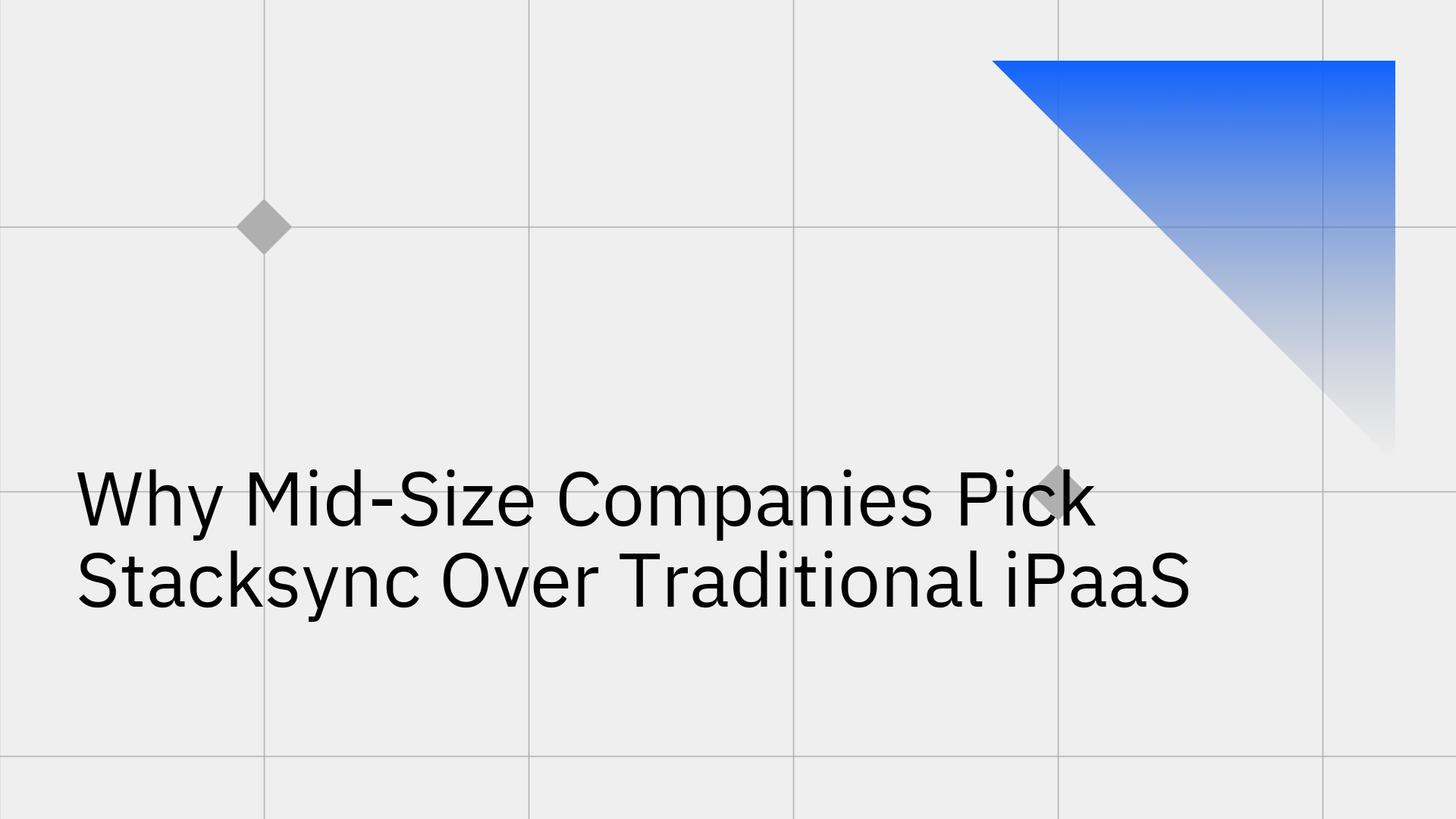
As mid-size companies scale, their operational landscape grows increasingly complex. The proliferation of essential applications CRMs, ERPs, databases, and various SaaS tools creates a web of disconnected data. This fragmentation presents significant data integration challenges, as managing data flows becomes a resource-intensive and error-prone task [7].
To solve this, businesses typically turn to two types of solutions: traditional Integration Platform as a Service (iPaaS) or modern, dedicated sync platforms. While traditional iPaaS offers a broad range of connectivity, a growing number of mid-sized businesses are choosing the specialized, purpose-built approach of an integration platform for mid-size companies like Stacksync. This article explores why.
Mid-size companies occupy a challenging middle ground. Their integration needs have outgrown simple point-to-point solutions, yet they often lack the enterprise-level budgets and large, dedicated engineering teams to manage complex integration suites. This leads to several common pain points:
Traditional iPaaS platforms are designed to be general-purpose tools. They act as a "jack of all trades," connecting a wide array of applications and automating workflows. While powerful, this generalist approach has significant shortcomings for mid-size companies whose primary need is reliable, real-time data synchronization.
For a deeper dive into how these platforms compare, see our analysis of Workato, MuleSoft, and Boomi.
Stacksync is a modern data integration platform engineered specifically for real-time, bidirectional data synchronization. Instead of trying to do everything, Stacksync focuses on doing one thing exceptionally well: ensuring your data is perfectly consistent, accurate, and up-to-date across all your critical business systems. This focused approach provides several key advantages for mid-size companies.
Stacksync uses an event-driven architecture to capture and propagate data changes in milliseconds, not minutes. When a record is updated in your CRM, the change is reflected in your database instantly, and vice-versa. This is essential for mission-critical operations, such as giving a sales representative the most current information from the customer support platform during a live call. This stands in stark contrast to the inherent latency of traditional iPaaS. These modern real-time sync platforms outperform legacy solutions by providing the speed that modern business operations demand.
Stacksync is built to handle millions of records from day one without requiring you to manage any infrastructure. Our platform is designed for enterprise-grade reliability with features that are critical for resource-constrained teams:
We understand that mid-size companies have diverse teams with varying technical skills. Stacksync caters to this reality with a flexible configuration approach:
Mid-size companies need predictable costs to manage their budgets effectively. Stacksync offers a clear, transparent pricing model based on the number of records in sync, which is far more predictable than the complex, task-based pricing of traditional iPaaS. This allows you to scale your data integration efforts confidently without fearing unexpected cost overruns. Our model ensures you get a cheaper, more reliable alternative that grows with your business.
The choice between a generalist tool and a specialist platform becomes clear when you compare them side-by-side. For companies prioritizing data integrity, the advantages of a dedicated sync platform are undeniable.
Deciding between iPaaS vs. dedicated sync platforms depends on your primary goal. If it's maintaining a single source of truth for your operational data, a purpose-built solution is the superior choice.
For mid-size companies, agility and efficiency are paramount. You need an integration platform that is powerful yet simple, scalable yet cost-effective. While traditional iPaaS tools are effective for general workflow automation, they are not optimized for the critical, high-fidelity data synchronization that a growing business depends on.
Stacksync provides the purpose-built solution to solve these core data challenges. By focusing on real-time, bidirectional sync, we empower your teams to trust their data, streamline operations, and focus on what they do best driving growth.
Ready to see how Stacksync can transform your data integration? Book a demo today and experience the power of a modern data sync platform.
For more information on the evolving landscape of integration tools, explore our guide to the best iPaaS solutions for small to mid-sized businesses.